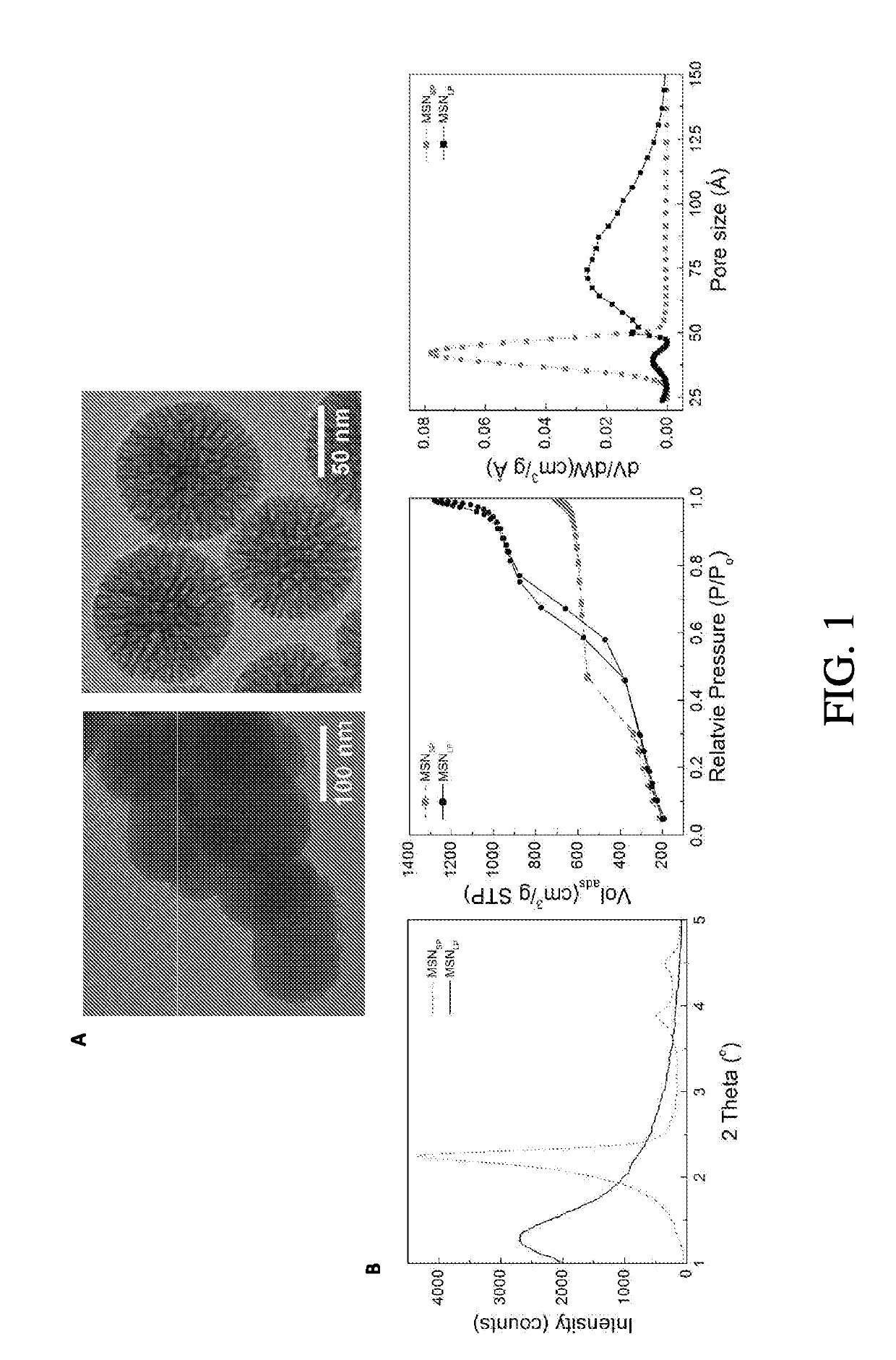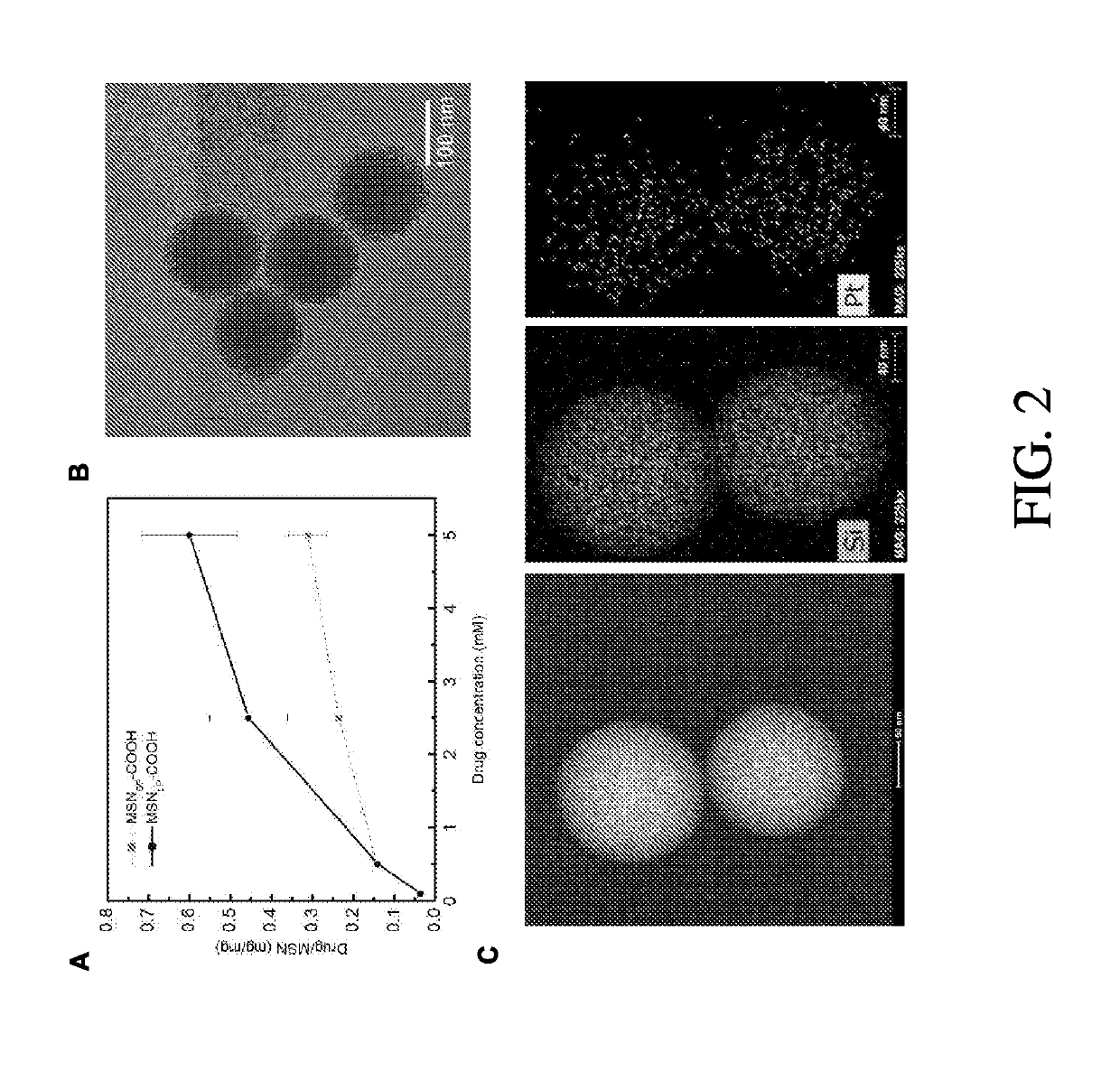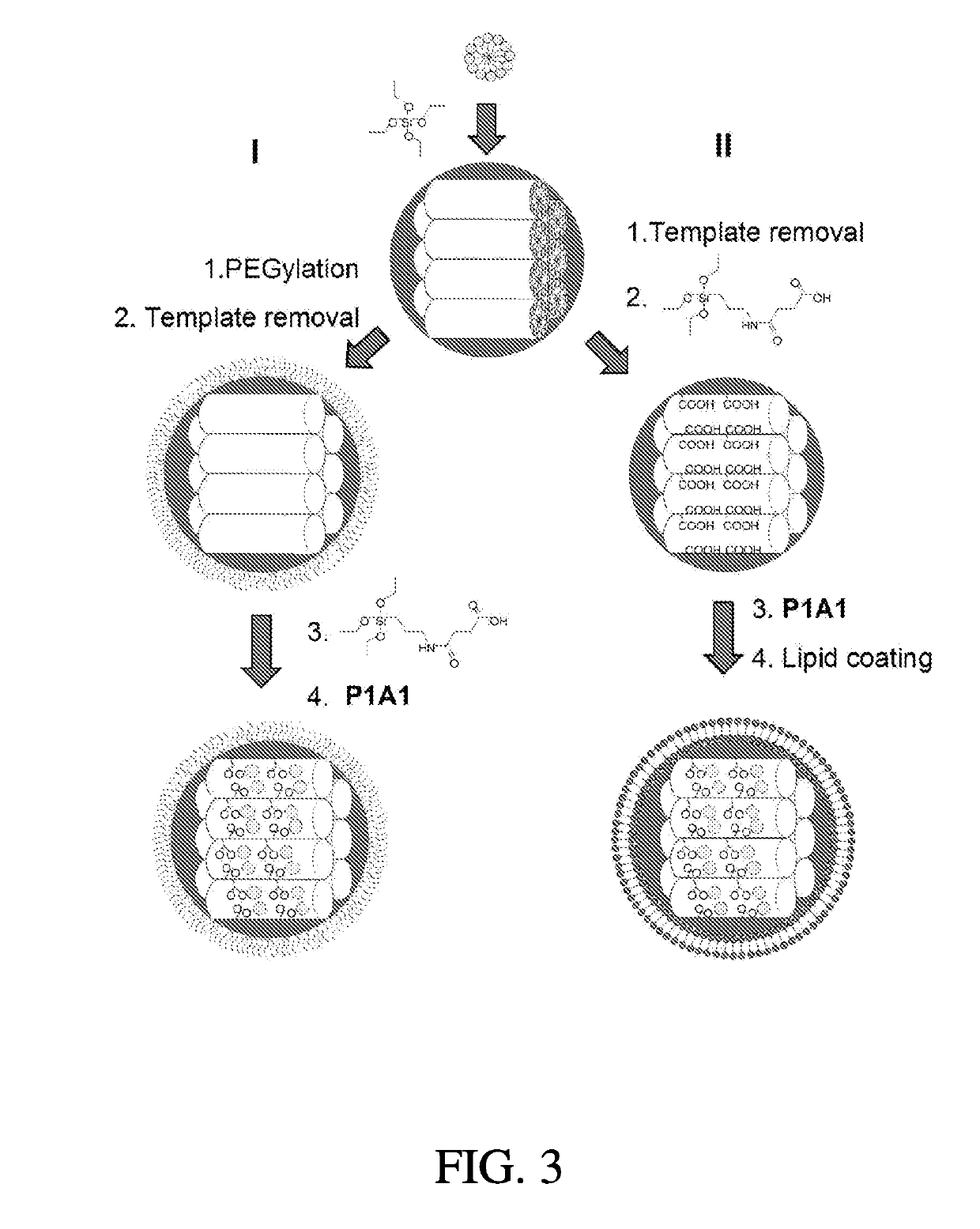Compositions and associated methods of mesoporous nanoparticles comprising platinum-acridine molecules
a technology of platinum-acridine molecules and mesoporous nanoparticles, which is applied in the field of pharmaceutical compositions comprising mesoporous nanoparticles, can solve the problems of severe systemic toxicities, limited efficacy and severe toxicities, damage to healthy tissues, etc., and achieve the effect of reducing systemic toxicities and improving pharmacological properties
- Summary
- Abstract
- Description
- Claims
- Application Information
AI Technical Summary
Benefits of technology
Problems solved by technology
Method used
Image
Examples
examples
Materials and Methods
Reagents and Solvents
[0153]Cetyltrimethylammonium bromide (CTAB), 3-(aminopropyl)triethoxysilane (APTES), tetraethylorthosilicate (TEOS), and succinic anhydride were purchased from ACROS. 2-[Methoxy(polyethyleneoxy)-propyl]trimethoxysilanes (mPEG-silane; MW=600 and 1,200) were purchased from Gelest (Morrisville, Pa.). mPEG-silanes with MW=5000 and 20,000 were purchased from Laysan Bio (Arab, Ala.). 1,2-Dipalmitoyl-sn-glycero-3-phosphocholine (DPPC), 1,2-dipalmitoyl-sn-glycero-3-phosphoethanolamine-N-[methoxy(polyethyleneglycol)-2000] (ammonium salt) (DSPE-mPEG) and 1,2-dioleoyl-3-trimethylammoniumpropane (chloride salt) (DOTAP) were purchased from Avanti Polar Lipids (Alabaster, Ala.). 1,2-Distearoyl-sn-glycero-3-phosphoethanolamine (DSPE)-conjugated and fluorescein-labeled polyethyleneglycol (DSPE-PEG5k-FITC) was purchased from Nanocs (New York, N.Y.). Compound P1A1 was synthesized and characterized according to previous work done in the inventors lab (Z. Ma, e...
PUM
| Property | Measurement | Unit |
|---|---|---|
| pore size | aaaaa | aaaaa |
| wt. % | aaaaa | aaaaa |
| pore sizes | aaaaa | aaaaa |
Abstract
Description
Claims
Application Information
 Login to View More
Login to View More - R&D
- Intellectual Property
- Life Sciences
- Materials
- Tech Scout
- Unparalleled Data Quality
- Higher Quality Content
- 60% Fewer Hallucinations
Browse by: Latest US Patents, China's latest patents, Technical Efficacy Thesaurus, Application Domain, Technology Topic, Popular Technical Reports.
© 2025 PatSnap. All rights reserved.Legal|Privacy policy|Modern Slavery Act Transparency Statement|Sitemap|About US| Contact US: help@patsnap.com



